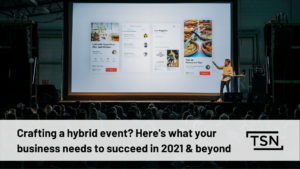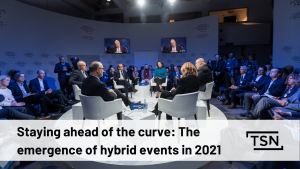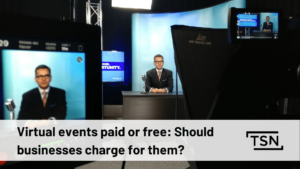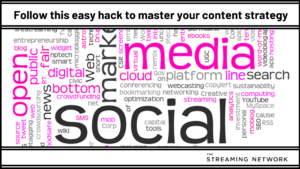With most of the United States open for business and the rest of the world preparing to follow suit, there is a lot of excitement right now. In our personal lives, we look forward to travelling again, reuniting with loved ones, going to concerts as well as returning to the conference and tradeshow circuit. Well, maybe not that last one. But there is no doubt that many events that went virtual (75 per cent of organizers took the plunge) during the Covid-19 pandemic will be in-person again by late 2021 or early 2022.
And yet, there is healthy amount of trepidation.
Many people are still uncomfortable with crowds and the prospect of live events, despite being fully vaccinated. Having grown comfortable with remote work, not everyone is returning back to the office. The scientific community is talking up a storm about new variants and there is just a general feeling that, even as we get back to our pre-pandemic lives, there won’t be a full return to the old ways. In short, we are entering a “new normal,” dominated by virtual and hybrid events.
The slow rise of virtual events
Here at The Streaming Network, our only barometer for sweeping changes is to revisit late 2009, as the world emerged from a series of housing market crises and a global economic downturn. At that time, TSN was a young company, its first full year of business, reaping the benefits of reduced travel budgets during the financial crisis.
This was the birth of the virtual conference. It was also when we first started to see virtual tradeshows. Many in our industry believed – wrongly, as it turned out – that this marked a turning point in the way companies conducted business.
Although the technology had come a long way and the acceptance of virtual events was on the rise, the pivot to virtual faced insurmountable challenges, including cumbersome user experiences and limited access to broadband. Perhaps the most crucial factor was that most business continued to occur via handshakes and face-to-face interactions. In the end, as soon as people had the budget to travel again, events went back to in-person, and almost overnight, virtual event adoption dropped dramatically.
Global crisis shifts attendee expectations
But over the next 12 years, a series of factors would come together year-over-year pushing virtual events to the forefront, before culminating in a global pandemic and historic economic slowdown.
This time around things are different.
Today, the technology and user experience are far superior to what we had 12 years ago. Companies today are much better positioned to make connections digitally and convert virtual attendees to customers. Most critically, audiences themselves have changed forever.
For some attendees, the prospect of getting on a plane for Las Vegas or San Francisco to attend or speak at an event is a welcomed reprieve. Getting away from home and seeing colleagues they seldom see beyond their computer screen is one of the perks of the job.
However, there is another, arguably larger segment of attendees that sees travel to events, as an unwelcomed hassle. It’s a job perk for which the novelty wore off eons ago. These same people have learned that with technological advancements and the mainstream adoption of virtual meetings and events, we can accomplish almost anything professionally, including attending the biggest industry conferences from our home office. We can even keynote a conference at 4pm and be home for the family barbeque later that evening.
Our balance and priorities have swung and the prospect of re-joining the tradeshow circuit is no longer something we relish.
With such a seismic change in the behaviour of attendees and uncertainty surrounding travel restrictions and in-person events, the future is no doubt shifting towards the hybrid event.
What is a hybrid event?
A hybrid event contains both a physical as well as a virtual component, expanding the reach of in-person events to include those who cannot enjoy the onsite experience. It combines the best of virtual and physical sessions to deliver a unique attendee experience with its own set of engagement tools (i.e., live polling).
The best and most successful hybrid events cater to all their audiences – live and virtual attendees – while being mindful of potential issues like venue(s) capacity, registrations, check-ins and different time zones. It is absolutely essential that you deliver the same experience for everyone. WEC Grapevine, a five-day in-person conference in Texas with a digital experience layered on top, is one of the best examples of a successful hybrid event.
Hybrid events in the pre-pandemic world
In a pre-pandemic world, there were a number of reasons why people opted not to physically join live events:
- They could not get approval for the travel costs to visit the event.
- They did not believe that there was enough value to attend the event in-person.
- They had a personal or professional engagement that took precedence.
The limited studies done on hybrid events over the years all indicate the same thing – the vast majority of virtual attendees had no intention of attending the live event. Only one to two per cent of those who attend virtually even considered attending in-person before they learned about the virtual event, and less than 10 per cent of virtual audiences said they’d consider physically attending in the absence of a virtual offering.
These numbers make sense when you consider who normally attends the virtual component of a hybrid event:
- Attendees who live cross-country or in other regions of the world, making travel to an event a challenge.
- Attendees who are in positions that do not usually allow for business travel.
- Attendees who have only recently been introduced to your brand and are not yet sure what to expect from the event.
Event organizers who did not embrace the hybrid event in the pre-pandemic era looked at these virtual attendees as a “secondary” audience and believed they were better served through other means such as smaller regional events or, coincidently, virtual engagements such as webinars.
Hybrid events in the post-pandemic world
The biggest difference with post-pandemic hybrid events is we have two new groups attending the virtual segment of event sessions:
- Attendees who do not want to attend an in-person event due to lingering Covid-19 concerns.
- Attendees who’ve experienced virtual and prefer consuming their job-related event content online.
When it comes to hosting a successful event, the issue facing every business is the lack of a benchmark to account for the size of these new attendee groups. For the first time, the virtual-first segment does not primarily consist of those who “can’t attend but those who “don’t want to” attend. Most critically, they no longer represent a “secondary” but a part of your core, target audience.
Clearly, businesses and event planners alike will have their hands full addressing this issue, on top of meeting the specific expectations of their online audience (i.e., sorting out security features, event registration or developing content on demand). No doubt, the approach they choose will shape the direction of hybrid events and the events industry as a whole for the foreseeable future.
If you need help with your next webinar or hybrid event, whether it be setting it up or creating engaging content, reach out to one of the experts at The Streaming Network today! And check out our state of the art Engage Webinars platform. We’re passionate about creating compelling virtual & hybrid events that people want to attend.






